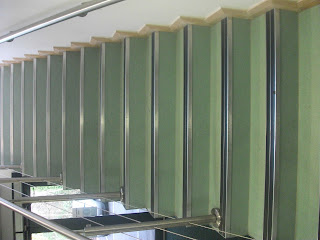Use of photography within the media
industry
There are six different areas/types of photography; these are fashion,
advertising, portrait, photojournalism, macro, and landscape.
FASHION

This photo was taken by a fashion
photographer in the 1950s named Henry Clarke. Fashion photography is very
different nowadays. During the 1950s, fashion photography was a lot more
elegant and was also in a black and white contrast. The photo is a lot simpler
than it would be in the 2000s, this is because the older fashion photos are
simple yet affective and the photos nowadays have a lot more graphics, detail,
colour, and are edited.

In this photo it is noticeable how fashion
photography has changed over the years. There are bright colour and lots of
text. The lighting has been edited to make her features stand out and have the ‘perfect’
look that most young girls will desire after looking at fashion photos like
these. The colour has been enhanced to stand out more and attract the public
eye. The model is also wearing a lot more makeup which would have also been
edited on the computer. Her skin has been airbrushed which gives it a glowing,
flawless affect which the fashion industry will be aiming for. Whereas in the
1950s they wouldn’t have had the technology to edit photos the way we do now, therefore
the 1950s fashion photographs look a lot more natural.
This image shows how acceptable photography can be nowadays.
In conclusion, fashion photography has changed from being
very formal to being very experimental.
ADVERTISING
Advertising photography is used to sell products. Adverts
need to stand out, be memorable, intriguing, possibly unusual and most importantly
they have to make you want to buy the product.
Here are two examples of one advert from then and now.
This photo is from
the Ford advert during the 1970’s. There’s nothing very exciting about it;
there’s no colour, no model, no bright contrast. It’s not very memorable which
doesn’t make it a very good advert.
However, the Ford advert from today shows the complete
opposite features. It has bright colours and even a model dressed in the colour
of the car. The angel of the photo is also much better because having the camera
closer to the ground and pointing at an angle towards the front of the Ford
makes the car look bigger and closer. Also, the brightness coming from behind
the model and the car make them both stand out with sharpness and a glow.
PORTRAIT
Portraits capture a person’s likeness and
are usually in groups or of individuals. The main focus of a portrait picture
is the face (expressions) and eyes. The people’s eyes are often looking
directly into the camera. A portrait photograph displays the personality and
the mood of the subject itself.
This portrait was taken by a well-known photographer Yousuf
Karsh. The portraits are all black and white because it gives it a formal look and
shows more emotion because there are no distracting bright colours. It’s just
the facial features and expressions.








 This photo was taken by a fashion
photographer in the 1950s named Henry Clarke. Fashion photography is very
different nowadays. During the 1950s, fashion photography was a lot more
elegant and was also in a black and white contrast. The photo is a lot simpler
than it would be in the 2000s, this is because the older fashion photos are
simple yet affective and the photos nowadays have a lot more graphics, detail,
colour, and are edited.
This photo was taken by a fashion
photographer in the 1950s named Henry Clarke. Fashion photography is very
different nowadays. During the 1950s, fashion photography was a lot more
elegant and was also in a black and white contrast. The photo is a lot simpler
than it would be in the 2000s, this is because the older fashion photos are
simple yet affective and the photos nowadays have a lot more graphics, detail,
colour, and are edited. In this photo it is noticeable how fashion
photography has changed over the years. There are bright colour and lots of
text. The lighting has been edited to make her features stand out and have the ‘perfect’
look that most young girls will desire after looking at fashion photos like
these. The colour has been enhanced to stand out more and attract the public
eye. The model is also wearing a lot more makeup which would have also been
edited on the computer. Her skin has been airbrushed which gives it a glowing,
flawless affect which the fashion industry will be aiming for. Whereas in the
1950s they wouldn’t have had the technology to edit photos the way we do now, therefore
the 1950s fashion photographs look a lot more natural.
In this photo it is noticeable how fashion
photography has changed over the years. There are bright colour and lots of
text. The lighting has been edited to make her features stand out and have the ‘perfect’
look that most young girls will desire after looking at fashion photos like
these. The colour has been enhanced to stand out more and attract the public
eye. The model is also wearing a lot more makeup which would have also been
edited on the computer. Her skin has been airbrushed which gives it a glowing,
flawless affect which the fashion industry will be aiming for. Whereas in the
1950s they wouldn’t have had the technology to edit photos the way we do now, therefore
the 1950s fashion photographs look a lot more natural.